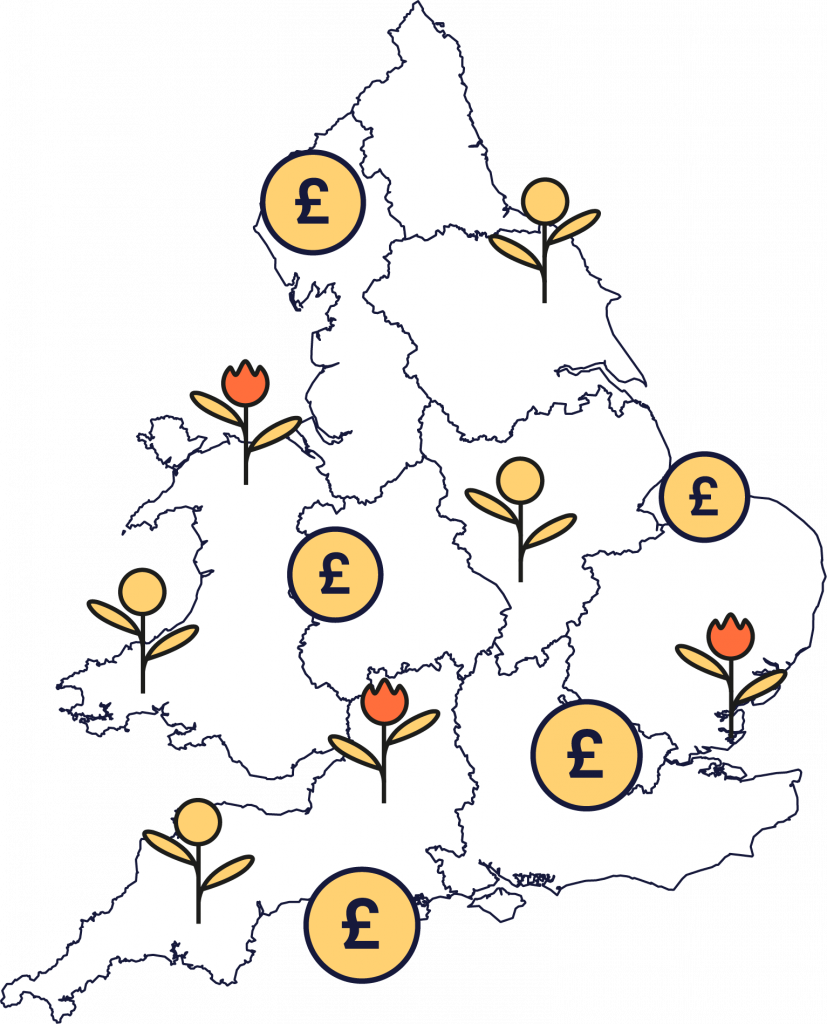What is a good rental yield? It’s one of the most frequently asked questions by landlords, as it offers an important metric for evaluating a buy-to-let investment.
When it comes to determining what constitutes a good rental yield, the answer depends on various factors. These include the location, market conditions and individual investment goals, to name a few.
Rental yields vary significantly between different areas and property types. Generally speaking, a higher rental yield is considered more attractive because it indicates a greater return on investment.
Having said that, good rental yield can be subjective and dependent on the investor’s specific circumstances and expectations.
In the UK property market, rental yields typically range from around 3% to 8%. Ideally, you want to be closer to eight than three. But it’s also worth noting that rental yields may fluctuate based on factors like supply and demand dynamics, economic conditions and changes in rental prices.
With that in mind, this guide looks at what can be considered a good rental yield and what some UK locations offer.
What is a good rental yield?
As a general guideline, a rental yield of 5% to 8% is deemed reasonable, although this can vary significantly depending on the region.
It’s important to note that in areas with high expected property value growth, like London and the South East, yields may be lower. Most areas in the capital average yields of 4-plus per cent, while it’s not uncommon for the South East to fall below the 5% marker.
This is because the prospect of capital gains drives up sale prices while rents remain relatively stable.
Other areas, primarily outside traditional hotspots like London and the South East, may have higher yields due to lower property prices. According to Molo’s internal data, the Central Valleys currently has the highest yields in England and Wales, offering 7.96% off an average property value of £100,785.
Top 10 locations with highest rental yield
- Explore the map
- Calculate expected yield based on your property value
- Calculate the avg. monthly rent and compare results with any location on the map

The first thing you should take under consideration is the type of property. Are you purchasing an individual buy-to-let, or do you have your eye on an HMO? In most cases, HMOs tend to offer higher yields due to the nature of multiple tenants.
This is especially true in areas with a high student population, where demand is consistent with those attending universities. But even with HMOs and student houses, you still need to be careful about where you pick.
Take Oxford, for example. Rents may be relatively high here (around £1,200 per month), but so are house prices (£339k). That leaves you with a yield of 4.16%.
In another university town like Durham, however, yields are an impressive 6.67%. While the monthly rental might be lower at £544 per month, property prices average just £94,000.
If you’re an investor looking for a lower barrier for entry in the buy-to-let market, an area like Durham will likely seem more appealing than Oxford.
A low rental yield doesn’t necessarily signify a poor investment, as it’s just one piece of the puzzle. While a high yield may indicate immediate profitability, a low yield can be indicative of other potential benefits, such as long-term capital growth.
In some cases, a low-yield property might offer advantages like lower void periods or more stable tenants. You’ll need to consider your investment strategy and long-term goals when evaluating rental yield. Always look at the bigger picture, including location, property type and market trends, before making a decision.
Generally speaking, anywhere outside of London has a higher yield, especially as you begin to head north. But the capital remains the primary buy-to-let hotspot for those who can afford the high property prices. For many, the yield doesn’t factor in as much as the location, the association of owning property in London and other factors.
The rental yield metric is helpful for comparing the potential performance of various properties. For instance, if one flat offers an expected rental yield of 8% and another in a different location offers 6%, the former is likely a better choice, assuming affordability and tenant availability are equal.
However, using rental yield for direct comparisons with other investment avenues like stocks isn’t as straightforward. This is because buy-to-let investments come with a range of additional costs – both initial and ongoing – that must be factored in when considering becoming a landlord.
Upfront, you’ll encounter costs like legal fees, stamp duty and possibly renovation expenses. On the maintenance front, landlords are responsible for repairs and unexpected costs, such as a boiler replacement. Letting agent fees and potential void periods are other ongoing expenses to consider.
Despite these costs, many buy-to-let investors find satisfaction if their rental income covers these outlays, along with any mortgage costs, and leaves a bit of extra income each month. This is especially true when considering the long-term capital growth potential of the property.
Where are the best rental yields in England and Wales
Going purely by the numbers, according to Molo’s data, the best rental yields can be found away from London and the South East. We’ve already covered the Central Valleys, which offer the highest yields in England and Wales.
Top 10 locations with highest rental yield
Top 10 lowest-yielding areas in England and Wales
Handy tip: Use Molo’s rental yield calculator to compare over 130+ locations across the country and discover how your rental stacks up.
Final thoughts: what is a good rental yield?
There’s no definitive answer for what constitutes a good rental yield, as it varies based on your property’s location and your own expenses. However, as a rough benchmark, anything above 5% is a good rental yield. Higher than that, and it’s often viewed as excellent for a buy-to-let investment.
Top 10 locations with highest rental yield
- Explore the map
- Calculate expected yield based on your property value
- Calculate the avg. monthly rent and compare results with any location on the map



